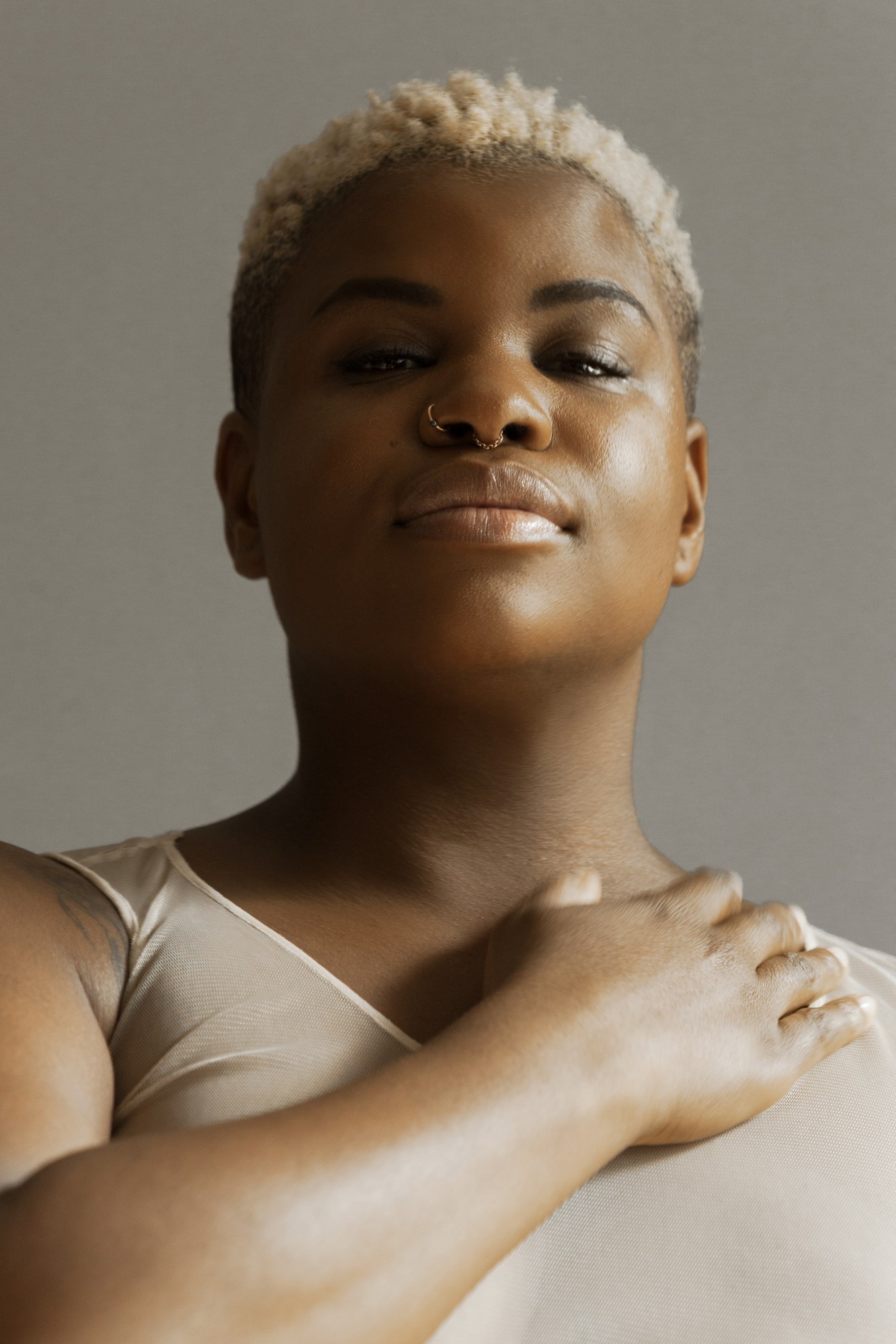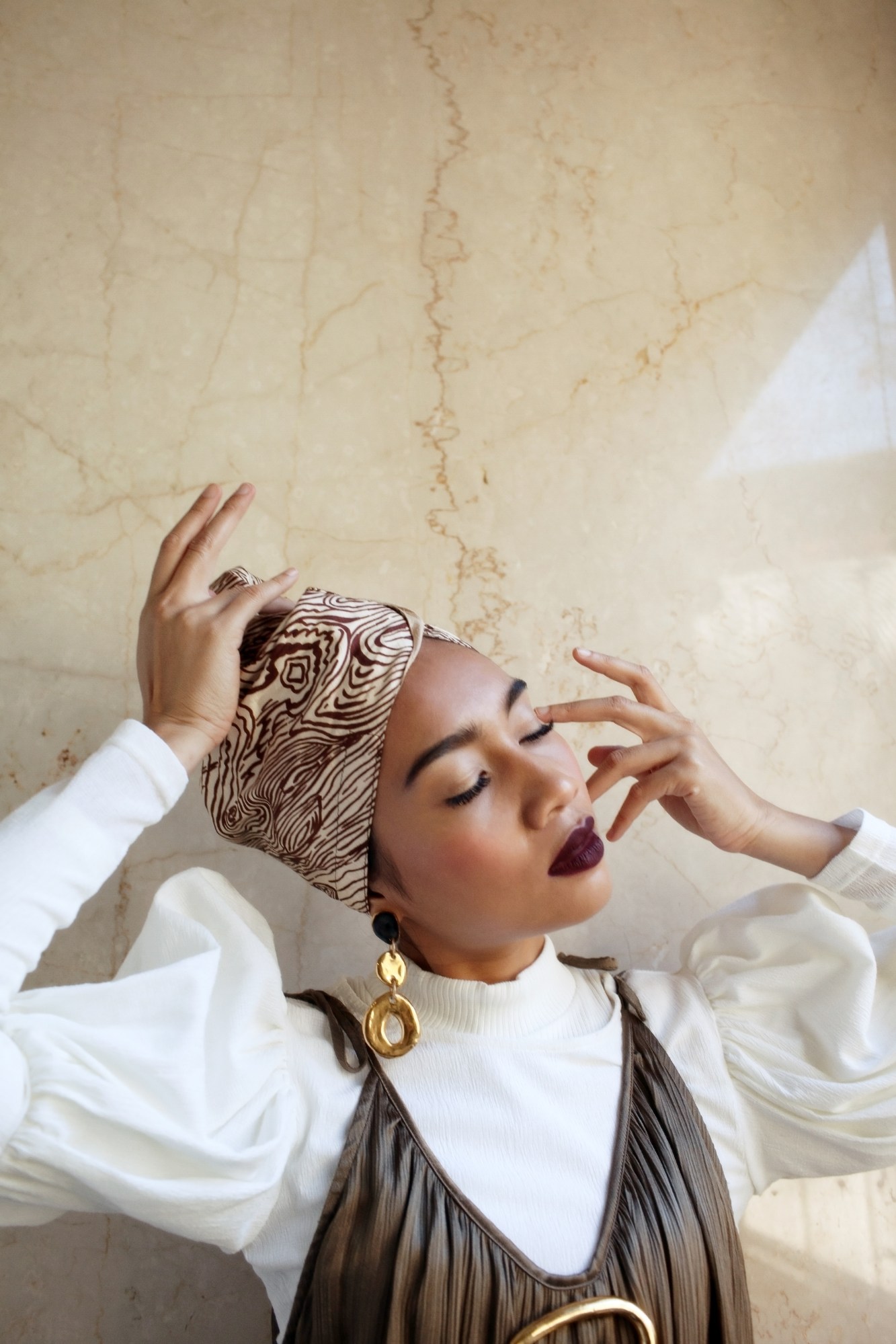Tonal Journal first started in 2016 as a scribble on a cocktail napkin. Motivated by the tumultuous 2016 election, writer Zarna Surti wanted to a create space where women of color could share their stories. As a first-generation Asian American, Zarna wanted to uplift women in her community and celebrate their strength. After working at digitally-driven cool girl companies like Nasty Gal, she wanted to make something offline, where she could foster an honest dialogue on identity.
When she landed on the word “tone,” in relation to “music, color, or writing,” (her three favorite things) the former backup singer knew she was onto something. Now two years later, Tonal Journal has released its inaugural volume, a 288-page hardcover magazine based on the tone nude. The neutral hue inspires the raw feeling, visuals, and stories throughout the issue.
“Nude is like your skin tone, it is the closest you can get to yourself,” Zarna says. The intimate look into the experiences of women of color is shared through personal essays on topics like colorism, photoshoots exploring spiritual identity and self-acceptance, and inspirational poetry from teen writers.
Following the release, Zarna talks to i-D about the power of getting offline and how she is using art as activism.

Was the idea for Tonal born out of personal experience?
Being Indian American, I would never see Indian woman anywhere. Maybe I would see a Latina woman, which was like the closest you could get when you were shopping for makeup and stuff like that. But, especially being Asian American, you never saw East Indian women. I also think that when people think of the word Asian, they just think of this one person, or when you think of Arabic, you just think of this one person. I never saw anyone who looked like me in a magazine until I went to India and opened an Indian magazine.
How did the significance of this project change after the election?
I was trying to figure out ways around the election to use art as a form of activism and what I could do that felt genuine. Tonal doesn’t live digitally and we aren’t going to post on social media all the time and we aren’t going to have a content site like that, but what we can do is share these stories in a way that we know how.
I am also exploring with the platforms how we can do things together, like IRL activations so we can really have an impact on the community and open it up even more. I think it is very important right now. I think the more of us that can band together, the better.
These stories are really personal, how did you get that level of intimacy?
It is all about identity, and talking about different ways we explore that. I know there are so many people that are mixed race or first generation or whatever. You don’t hear those stories enough. I think because it is this limited-edition, short-run print piece that doesn’t live online, it helps people feel like they can create a piece that not everyone is going to see it can be easier to be honest.

Can you share more about the tone nude and what that means?
For me, nude came from doing work, especially in LA, that is very cool girl and social media-centric. I think it was really, interesting, and graphic, and I just felt the need to pare it back and do something really emotional. I just wanted the stories to be personal, I wanted it to be softer visually. It really came out of a need to write stories like that and not have the need to have super catchy headlines and follow it up with something funny. I just wanted it to be storytelling.
In this issue you collaborated with Inner-City Arts , how did you connect with them?
It is this amazing place in Los Angeles for children and teens to produce art, and not necessarily in the way they would at school. It is everything from music production to dance and pottery. We came up with the idea together, with some of the teachers, to let some of their girls of color start exploring pieces that related to feminism, equality, heritage, and what that meant for them. We chose our favorites so that they could have published work going into college and applying for college. A huge part of Tonal is to empower youth.
What do you hope people take away from Tonal?
The best thing is when I get these great DMs. I got a DM this morning and someone told me they got the book last weekend and sat around with their friends and looked at it and talked about it. For me, we are getting people off their phones and their digital life and giving them a minute to have conversations about what we have written about, or photographed or created, that is awesome. If we can get people to enjoy being in the moment and celebrating these women of color for a part of their day — I am so happy. That is really it.
What do you have planned for the next volume?
Each issue will be based of a different tone. Eventually they will all fit on your bookshelf like an encyclopedia series of all different colors. The next one is actually going to be ruby. Ruby ranges from a pale pink to a blood red, so we are going to play in the spectrum of pink and red for the next one. Now, we have lived in this nude world, so we are going to have fun and make it bold. Let’s talk about love, let’s talk about sex, let’s talk about whatever that is.

